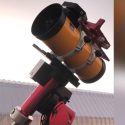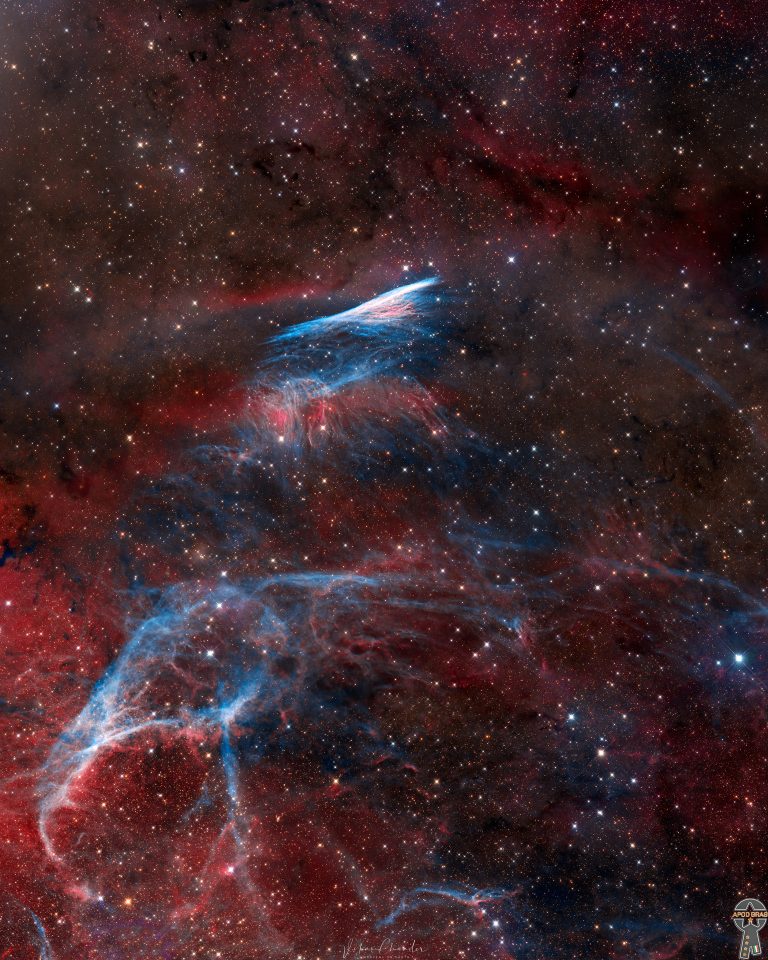Vikas Chander Astrophotography
NGC 2736
The Pencil Nebula
Telescope : Takahashi E160ed
Camera : ASI ZWO 6200mm Pro
Mount : Software Bisque Paramount MX+
Focal length : 528mm
Fov : 234 x 156 arcmins
Image Scale : 1.47 arcsec/pixel
Observatory : Deep Sky Chile
Filters: HaORGB
R 105x180s G 100x180s B 103x180s
Ha 102x300sm Oiii 105x300s
Integration: 32h39m
RA: 08h 57m 42s
Dec : -45° 56′ 20″

Remnants from a star that exploded thousands of years ago created an astonishing spectacle seen here. Officially known as NGC 2736, it is part of the huge Vela supernova remnant and its linear appearance triggered its popular name, the Pencil Nebula. The nebula's shape suggests that the shock wave which followed the star explosion encountered a region of dense gas, causing the nebula to glow and appear like a rippled sheet. Some regions are dominated by ionized oxygen atoms which glow blue in the picture, yet other regions of mostly hydrogen and are seen emitting red in the image…. Close to 33 hours were utilised to capture the data on my telescope installed in Deep Sky Chile observatory. Dark skies with good seeing, a fast scope and modern sensors make easy work of capturing pristine data with very few lost subs. I deliberately captured a lot of data on Oxygen III and Hydrogen Alpha to better illustrate what is mentioned above. Image processing has progressed leap and bounds in the last year and with the myriad of post processing tools now available, constructing the final image was an easy task.
© Vikas Chander All rights reserved Copyrights

